#betamax tracking
Explore tagged Tumblr posts
Text
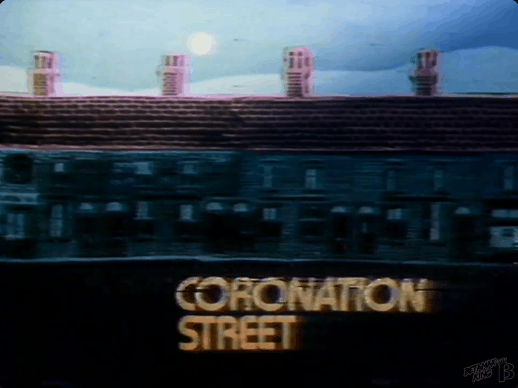
#coronation street#intermission card#1983#80s#1980s TV#betamax#VHSwave#betamax tracking#gif#my gifs#musical accompaniment provided by session disco musicians
31 notes
·
View notes
Text

#retro#vhs#vintage#80's#1980s#80s#eighties#betamax#neon#haze#city#cities#skyline#skyscraper#buildings#bridge#sunset#VHS#Tracking#80s aesthetic
975 notes
·
View notes
Text
Coming out strong in the “Old AF” class, with a solid zero and an embarrassing giggle-snort, it’s @star-trekkin-across-theuniverse

A hard zero for me.
#8-tracks are missing from this#also Betamax video tape#and shouldn’t BBS and telnet feature in it somewhere?
14K notes
·
View notes
Text

The actor/comedian Adam Keefe profiled in Famous Monsters of Filmland. He was the host of Buffalo, New York's "Fright Night Theatre" during the late '60s. Fittingly, he apparently landed the job after being featured in a vampire-themed ad for sore throat lozenges, and would later again appear as a vampire in a men's hairspray ad for Gillette as well as a Sony Betamax spot. He provided the vocals for the nifty track "The Ghoul In School" from the Americanized version of 1961's "Lyacanthropus," better known as "Werewolf In A Girls' Dormitory."
youtube
youtube
8 notes
·
View notes
Text
David Tennant's Obscure Short Films: 1996's Quality Control
I'm back for a short(er) little David Tennant in Obscure Performances post today. Let's have a teeny-tiny chat about another rarity of David's, shall we? - a short film he did in 1996 called Quality Control. And when I say this is a rarity, believe me….it's a rarity.
I've at least been able to confirm David acted in this short film, for he mentions it as a film credit in two places: the 1996 programme for The Herbal Bed, and the 1997 programme for Hurly Burly - as evidenced by this cast listing of his from my Hurly Burly programme:
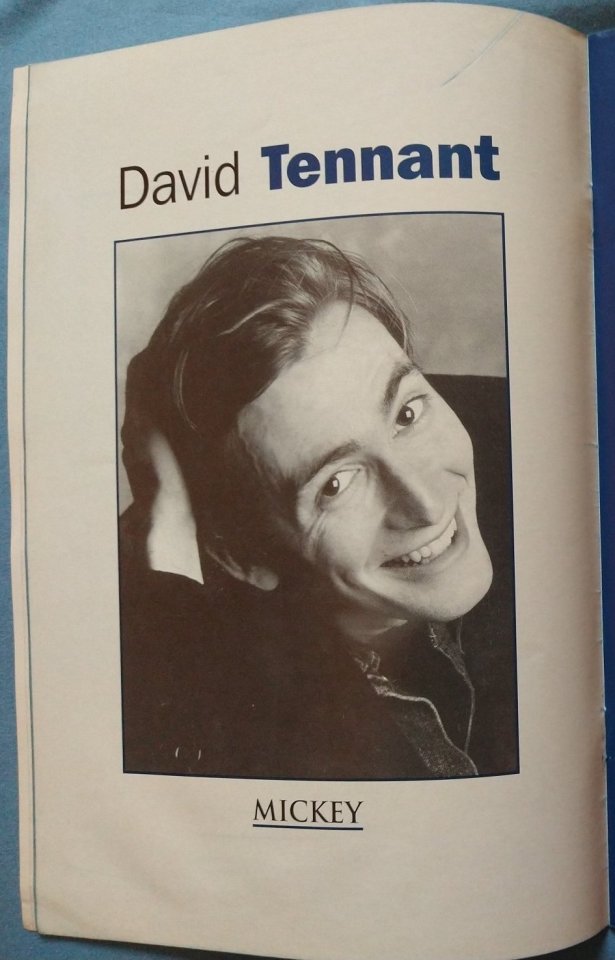
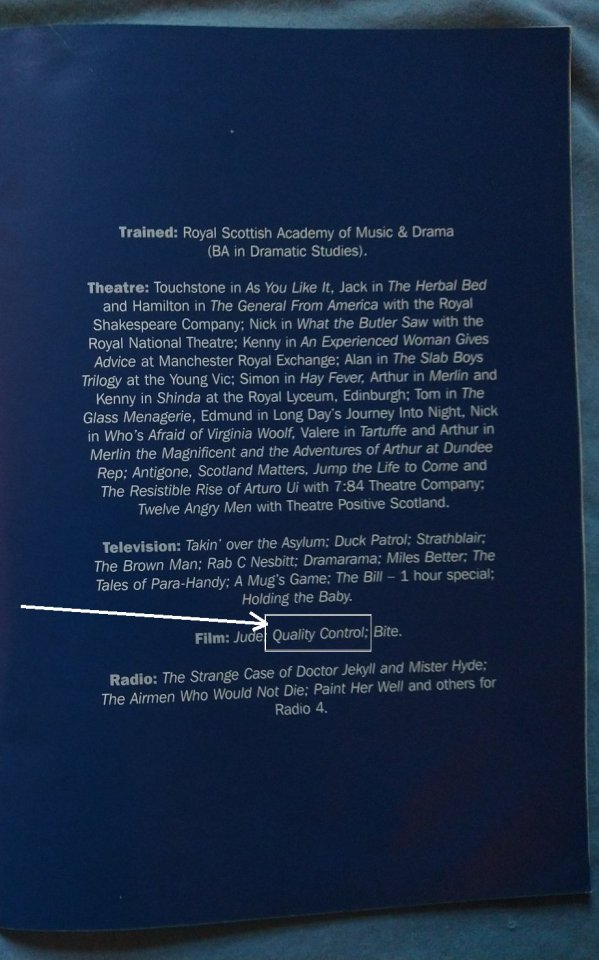
Quality Control has very little to no presence on the Internet, and there are only a few mentions of its existence. The first one I've been able to track which attributed the short to David was from a "David Tennant Fact Of The Day" post from May 2012.
The second mention is from the British Film Institute (BFI). If you study this notation, you'll notice another interesting detail: unlike many other works, the BFI does NOT hold any film or video materials relating to Quality Control. So they don't have a copy!
The BFI describes the film as a "comedy in which a job centre trainee finds himself totally inept in his new position of quality controller at a skateboard factory." But I hoped I might find a few other clues from another contemporary source: newspapers. So that's where I went!
All of the descriptions said Quality Control was a 20-minute short comedy - but I also learned it was the trainee's first day on the job, too. One can also assume (and I certainly do) David plays the role of the trainee. Here are some various listings I found:
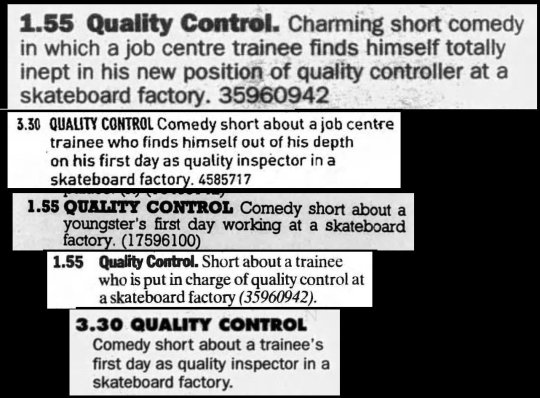
What's very interesting, though, is something the BFI doesn't list: Quality Control was also re-broadcast two years later in 1998! The 'Fact of The Day' I mentioned earlier clued me into that detail, and that tidbit was invaluable in my search for mentions of the short. Why? Because this one's a real tough one to search. David's never mentioned in any printed synopsis, and seriously…just try to do a search using only the words, "Quality Control." It's an utter nightmare!
But knowing what I knew, I was able to add to the information the 'Fact Of The Day' had provided. Quality Control originally aired at 1:55p on 10 Jun 1996 on BBC Channel 4. In 1998, Channel 4 aired it two more times: on 8 Feb 1998 at 3:30p, and at 1:30p on 26 Oct 1998. It was also repeated regionally on S4C at 1:30p on 6 Nov 1998.
Its repetition in 1998 has intrigued me. It implies the BBC kept a copy of the short from 1996 to its re-air dates in 1998. The BFI listing for the short says it doesn't have a copy in its archives, but unless the BBC has subsequently erased it, a copy of that short might still exist. Somewhere. I'd love to find it, as it's one of the few things David did during that time I haven't seen. So we have no screenshots. But we know he did it. And who knows if the BBC has it in their archive.
But you know, maybe someone's got it recorded somewhere on an old Betamax tape.
34 notes
·
View notes
Text
REHAB DOLL TURNS 35!






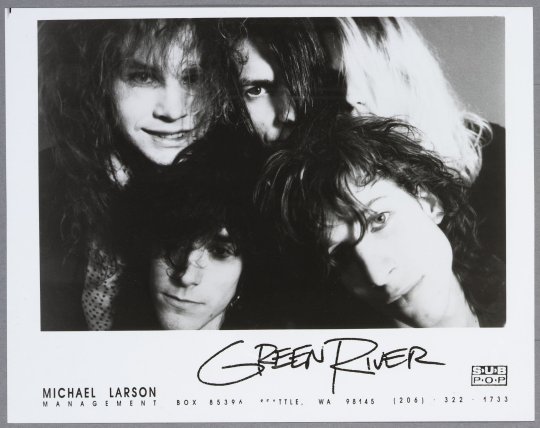



The story of Seattle’s rise to global rock supremacy in the late ’80s and early ’90s begins with Green River. Made up of Jeff Ament (bass), Mark Arm (guitar/vocals), Bruce Fairweather (guitar), Stone Gossard (guitar), and Alex Shumway (drums), the quintet put out three 12”s and a 7” single during its brief existence. Green River’s influence on Seattle’s music scene spread far and wide thanks to the members’ dispersion into bands including Pearl Jam, Mudhoney, and Love Battery, as well as the punk-glam-sludge-rock songs they left behind.
“By ‘83, ‘84, there was definitely a movement that was happening within hardcore, like Black Flag slowing down for My War,” says Arm. “The Replacements and Butthole Surfers were rearing their heads, and they’re very different bands, but they’re not hardcore—the Replacements are pretty much straight-up rock, and Butthole Surfers were God knows what. Sonic Youth’s Bad Moon Rising was around, and a lot of really interesting post-hardcore things were happening.”
Green River, which formed in 1984, was part of that evolution, with a sound that straddled a lot of different genres—blues, punk, bloozy straight-ahead rock. The mini-LP Dry As A Bone, which came out in 1987, and the band’s lone full-length Rehab Doll, which came out in 1988, were released as a single CD with a few bonus cuts, including their sneering cover of David Bowie’s “Queen Bitch” and their marauding version of Dead Boys’ “Ain’t Nothin’ to Do,” in 1990—but they’ve been unavailable on vinyl for years. Now, these slices of Seattle music history are not only back in print, they’re accompanied by items from the vaults that had been forgotten about for decades.
Dry As A Bone was recorded at Jack Endino’s Reciprocal Recording in 1986, and it shows the band in furious form, with Arm’s yowl battling Fairweather and Gossard’s ferocious guitar playing on “This Town” and “Unwind” opening as a slow bluesy grind then jump-starting itself into a hyperactive chase. The deluxe edition includes Green River’s cuts from the crucial Seattle-scene compilation Deep Six, as well as long-lost songs that were recorded to the now-archaic format Betamax.
Rehab Doll, recorded largely at Seattle’s Steve Lawson Studios., bridges the gap between the taut, punky energy of Dry As a Bone and the bigger drums and thicker riffs that were coming to dominate rock in the late ’80s. This new edition of Rehab Doll includes a version of “Swallow My Pride” recorded to 8-track at Endino’s Reciprocal Recording, which features a more accurate depiction of how the band sounded when they played live. “When I listen to these mixes, I think, ‘This is how we actually sounded—this is the kind of energy we had,’” says Shumway.
Green River’s place in American music history is without question, but these recordings paint a more complete picture of the band—and of rock in the mid- to late-’80s, when punk’s faster-and-louder ideals had begun shape-shifting into other ideas.
#stone gossard#jeff ament#mark arm#steve turner#bruce fairweather#subpop#Rehab Doll#green river#mother love bone#pearl jam#mudhoney#seattle#35th anniversary#Alex Shumway#swallow my pride#steve lawson
50 notes
·
View notes
Text
Shakey Sundays #6:
Neil Young and Promise of the Real's The Monsanto Years
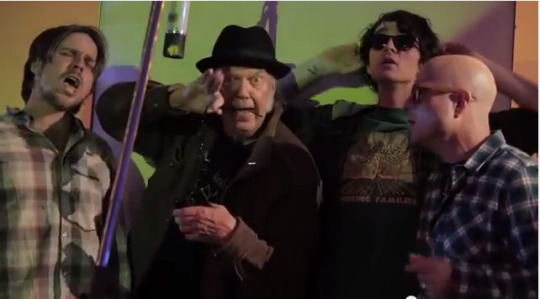
Somehow this album is cursed in my biography. Every time I try to listen to it something goes deeply wrong. And it's no wonder: in the silly recording session photo above it looks like Neil is casting an evil spell on all of us. Monsanticus!
When the record came out in in the summer of 2015 I was suspicious; Neil had just released Storytone, and it sounded like he'd focused on painting the record's cover and washing his hogs rather than writing good songs. Plus I'd never even heard of his new backing band with their too terrible to be ironic name. Crazy Horse was alive and well; what was Young up to now?
But 20 years previously I'd been equally suspicious when Young got spooked by the Horse and buddied up with a different group of young hipsters to make Mirror Ball, and that record turned out to be awesome. And so I knew The Montsanto Years deserved my open-mindedness in spite of its clunky title and fairly gross cover art.
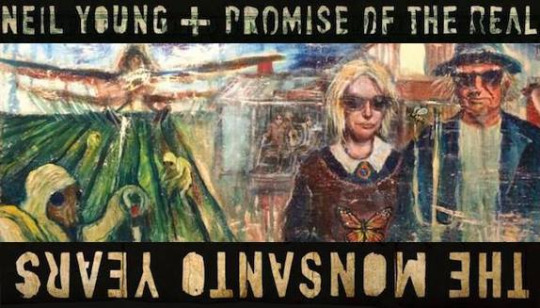
So I turned it up loud for the first time with my buddy Matt. It was a beautiful day and we had an open road with two hours of drive time ahead of us. Maybe we'd listen to it twice!
But halfway through the album's third song, People Want to Hear About Love, with its inspired-by-Stephen-Still's-very-own-Joe-Lala bongos, and its gather about me young squires chanting, not to mention Young's crankiest grandpa vocal stylings to date, Matt and I simultaneously announced that the song sucked. We put on Zuma instead.
Even so, People Want To Hear About Love, stayed annoyingly in my head all day, and that day was dedicated to attending our friend's younger sister's funeral. I couldn't shake crusty grandpa Neil off at the graveside as my friend's 20-something little sister was lowered into the earth, her life cut short by cancer that came with touches of abhorrent irony: she'd been a nurse; her dad was a cancer doctor. You're wrong Neil, I angrily thought, no one wants to hear about love. Nor do they ever want to hear your song again.
I've given the record sporadic second chances since then. And every time I get to the fourth track, Big Box, I perk up. After all, it opens with Neil alone, playing a demonstrative and churning, here's how it works kids, follow my lead, riff that sounds like it's lifted straight from Mirror Ball.
youtube
But before you know it Neil croons "Too Big To Fail" in overdubbed fashion and rhymes "excited" with "Citizens United" (you know, the Supreme Court case that gave corporations the power to essentially buy our elections) and, despite some pretty exciting guitar interplay whenever Young shuts his trap, rather than echoing Mirror Ball the whole thing sounds like Young is hanging out with Kai Ryssdal or David Brancaccio on Marketplace. Come on Neil, that's my least favorite show on NPR.
Yesterday I gave the record yet another try: but again, no dice; my 15 year old ipod (no, I don't own The Monsanto Years on vinyl; I got it in true Dollar Bin fashion by checking it out at the library) played me the first two songs, the lyrically regrettable opening track, which isn't amazing but does not suck, and the pretty lovely, quavering Wolf Moon, before the device (it's the kind with a dial on the lower half; there are 22 thousand songs on the thing, and around 1600 of them are Young's), perhaps disgusted by my choice for this week's Shakey Sunday, cried uncle and died in what appeared to be the very real Steve Jobs kinda fashion.
I was able to resuscitate it eventually but I'm unsure whether or not to risk resumption of the album. After all, it's cursed! And when the terrible day comes, and my ipod refuses to wake back up no matter how many times I pressed down all the buttons at once while cursing, will I need to find another way, either through a very nonDollar Bin purchase of the vinyl or through Neil's old timey, betamax website, to listen to The Monsanto Years ever again? Or can I just stick with Zuma?
Well, let's find out the answer. It's a Shakey Sunday and I'm about to roll my ipod's dice, press play, and go song by song through the rest of Neil's far too long screed against agrobusiness.
The fifth song, A Rock Star Bucks a Coffee Shop, is a big No vote for the record. Yikes. I'd rather drink a big cuppa GMO than hear Young rhyme GMO with Mont-san-to ever again. Whoever is responsible for the whistling in this song needs to never purse their lips in my presence again.
I suspect POTR (I refuse to ever type the band's terrible name out again; I wish they'd named themselves Promise of the Real Sausages instead) are big fans of Young's live bender record Time Fades Away. Working Man's got that vibe but it's slick instead of shakey. Yuck.
In Rules of Change Neil gives us yet another version of the story he's been telling over and over again for the whole record: the farmers have woes; climate change is real; we're doomed unless we get on Uncle Neil's groovy train of love. Look: I'm an environmentalist already. I do what I can to eat sustainably; I ride my bike to work alongside my sweet daughter as much as possible; and I've got a bootleg gray water system already running out the back of my house as we speak, watering my trees with our laundry water. The simple truth is that I never needed this concept album, or any of Young's too numerous to count environmental anthems. I already know this stuff. I'm already angry and I already vote and if Trump gets elected next fall I'll lose my mind a second time. Frankly, Neil, I'd much rather imagine sleeping with Pocahontas.
But it's when we get to the album's title track that I start to wish my ipod was indeed broken.
youtube
The song is a terrifying double to Danger Bird: it's slow and brooding with caveman vocals. But the guitar is mostly sickening instead of life changing and everyone's chanting "Safeway" instead of telling me about Carrie Snodgrass sleeping around with some still unknown famous enemy of Young's and ruining his life in 75. I guess Neil's right, people do want to hear about love. And Marlon Brando. And the Astrodome. And me.
I haven't got much to say about the final track, If I Don't Know. It occurs, and it sucks less than most of what we just sat through. What I fear is that Young is letting some young hipster solo at the end of the song while he stands by, contemplating corporate sin. Jimi Hendrix is dead, Ira Kaplan is busy, Richard Thompson isn't interested and Stephen Stills sucks; no other man on earth should be allowed to solo on a guitar while on stage with Neil.
(But I'd be more than happy to have any number of women do so, however, from Leslie Feist to Myriam Gendron to the recently resurgent Joni Mitchell herself.)
Okay folks we did it. We made it through The Monsanto Years. You have my permission to never listen to it again.
Me? As of this moment, while I hit post, I'm already half way through the record for the second time today, and I'm kinda digging my time at the Big Box store. Looks like I like the record anyway.
Neil Young: even his garbage swings.
#Youtube#neil young#the promise of the real#stephen stills sucks#shakey sundays#feist#myriam gendron
7 notes
·
View notes
Text
My Grandfather’s Betamax and Modelling New Product Diffusion [1] [2]:

My grandfather loved his Betamax camcorder. Sometimes when I picture him he is carrying it with him, casually strung across his shoulder with the rainbow Sony strap (not unlike the one pictured) on display. My grandfather was convinced that Betamax was the superior and bound-to-be enduring technology. I imagine that he thought those home movies would be family heirlooms to be viewed again and again via compatible Betamax players.
I don’t want to paint the picture of my grandfather as na��ve. He was well educated (with degrees in Electrical Engineering and an MBA to boot) and a highly successful executive in one of the world’s enduring mega-engineering corporations. Perhaps he would be better characterized as an earlier version of me: be that a more successful, more dignified, more worldly, and much taller version of me. But one thing is for sure, his intuition regarding the staying power of Betamax was wide of the mark. Certainly, we could dissect the various blunders on Sony’s part which ensured that Betamax technology would never achieve market saturation. Yes, it’s easy to Monday morning quarterback most things, but could the right models have been applied to predict, with a measure of accuracy, the rise and fall of Betamax? For that matter, can we model diffusion of new products to untested markets? Take, for example, pre-sliced peanut butter slices, adhesive bandages embedded with nanocrystals of pure silver, a PC plug-in to release scents, a collapsible wheel, and a modified synthetic substance for horse racetracks. While these products sound far-fetched, they all share something in common. They are all 100% real products.
One powerful tool for forecasting the market diffusion of new and innovative products is the Bass Diffusion Model. Prior to Sony’s sale of the first Betamax camcorder (to my grandfather or someone just like him), the existing customer base was exactly zero. As product adoption began, the positive feedback from the handful of early adopters was so minimal that it was negligible, and thus a predictive model such as the Bass model needed to capture alternate adoption channels such as news media coverage, advertising, and directed sales efforts by Sony. To solve this problem, Frank Bass developed the Bass Diffusion Model in 1969 (see sample model diagram below) which solved the start-up puzzle by postulating that potential adopters are made aware of the new product via external information sources which can be modelled as constant over time in terms of magnitude and persuasiveness (effectiveness)[3]. The aggregate adoption rate is the sum of adoptions resulting from word of mouth and adoptions resulting from advertising and external influences.
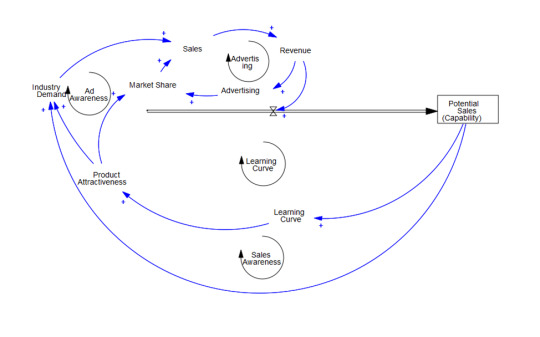
So, what happened to Betamax? Long before it could be cannibalized by superior technology it was dead in its tracks due to inferior technology: VHS (boo!). This was one of the rare times that Sony publicly and massively miscalculated. The popularity of this new technology was largely a function of externalities, specifically the size of the user base. By playing it close to the vest with its new technology, Sony kept the Betamax out of the hands of its competitors. We all know how that played out. Very soon every home had some type of VHS machine, and my family was left to watch my grandfather’s home movies while others were out renting E.T. and Tootsie and all of the other the latest blockbusters. The takeaway messages are numerous: 1) don’t trust your grandfather’s intuition, 2) all models have their limitations, and 3) pre-packaged peanut butter slices are only part of the solution without the jelly slices to go with.

[1] Image sources: image of someone making home movies 1980s betamax - Search Images (bing.com), peanut butter and jelly - Search Images (bing.com)
[2] Content for this article sourced from “Forecasting the Adoption of a New Product” by Professor Elie Ofek and Research Assistant Peter Wickersham, President and Fellows of Harvard College, Copyright 2005; “Four Products: Predicting Diffusion” by Professor John T. Gourville, President and Fellows of Harvard College, Copyright 2001; “Four Products: Predicting Diffusion (2008)” by Professor John T. Gourville, President and Fellows of Harvard College, Copyright 2008.
[3] “Business Dynamics” by John D. Sterman, copyright 2000.
3 notes
·
View notes
Text
Guide for people looking for how to track down a copy of Goncharov, because it’s not available on streaming. The Betamax version was made from a great master. The Laserdisc version used the same master but they messed up the colour grading. Fantastic cover art though. Worth owning for that alone. If you want the best experience, you'll want to track down the D-VHS but only a few were made. It looks incredible, and includes a bunch of extra footage that was cut from the theatrical release due to studio interference. The HD-DVD release was based on this so it's a good substitute if you can get it. It doesn’t look quite as nice, but it’s got some special features that are really worth it, like a behind the scenes made with some documentary footage taken at the time, and two directors commentaries; one recorded for the never-released DVD version and a new one made as part of an Xbox 360 marketing push around HD-DVD.
8 notes
·
View notes
Text
I’ve been working on a really big gift for Assumpta that I plan on giving her when I see her, and that’s a USB with almost all of her films and shows from the start of her career to 1995. I’ve spent the last six years hunting down and finding everything that I could of hers, and have probably spent hundreds of dollars collecting rare and out of print DVDs. (Rossini! Rossini! is my crown jewel; that alone was $80. The last copy I saw was from 3 years ago, and was listed at $400- you can’t find it anywhere now). Surprisingly, I’ve found a big chunk of her obscure works on a Russian video website. Not entirely sure why but I’m not complaining whatsoever.
In general I just like her stuff. Initially it started because I was looking to make edits and take screenshots for icons to use for rping Teresa. And it was incredibly difficult to track down her works. It STILL is sometimes. Her stuff from 1979-1995 is notoriously hard to find, and it really comes down to her works being foreign films and in a time period where things weren’t preserved well. Some films or shows I still haven’t found and likely never will. I search every foreign version of websites like ebay and amazon, or use their countries equivalent. i’ve visited so many shady websites and had to use vpn’s to even look stuff up. I couldn’t believe it when I found Adelaide on Vimeo, as only VHS or Betamax (who tf has a betamax machine anymore?) copies existed, often for $100+. I sent it to her and she was SO excited- she hadn’t seen that film in 30 years, since the premiere in 1991. And I decided I had to find all her works that I could if only to let her watch her own stuff again.
It made me sad to think so much of her works are inaccessible due to the time in which they were filmed and copies not being preserved that even SHE hasn’t seen many of them. Nowadays you can find quite a few on Amazon Spain (which ofc I can’t access) and some are even being made into Blurays! It’s great progress. But media preservation and access to stuff like this is important to me in general. I got to speak with John Tams, who played Hagman and was one of the co-composers of the Sharpe series, about the music in the films that weren’t included on the official CD. He told me that because of the technology at the time, going from analogue to digital meant that archiving was barely possible or desired because of the amount of space it would take. Those songs now only exist in the films- the rest are completely erased from history and quite frankly it’s devastating to think too hard about it.
So out of my list, I’ve managed to find about 71 of about ~90 films and shows/episodes of hers. Some I don’t think I’ll ever find. I’m still figuring out the best way to download videos online but I’ve ripped almost all my DVD’s and Blurays of hers, but I still have a ways to go.
This post was just supposed to be me bitching about how I managed to rip Company and Enemy, but not Rifles and Eagle lmfao. I got a little sidetracked. But yeah I’m worried bc the Sharpe Bluray’s were damn expensive and bc I watched those two films SO much the disc is...a little worn. But I don’t want to completely rebuy the collection so I’m gonna keep trying 😭😭😭
#;ooc#(sorry im just rambling)#(at this point i just need to make the Assumpta Serna Film Archive)#(6 years of collecting her works.......i'm normal i promise)#(we are Friends Now and that's what friends do!!!)
5 notes
·
View notes
Text

#retro#vhs#vintage#80's#1980s#80s#eighties#betamax#neon#haze#tracking#runners#lifestyle#miami#health#sunrise#the eighties
111 notes
·
View notes
Text
WEDNESDAY WORD OF THE DAY
Superannuated [soo-per-an-yoo-ey-tid] adjective: antiquated or obsolete.
Myspace is superannuated. Taxi dispatchers, paperboys, and travel agents are on the way to being superannuated. Montgomery Ward, Blockbuster, Tower Records, KB Toys, the Dumont Network, and Radio Shack? Superannuated.
Somedays I feel a bit superannuated myself. Roll my wheelchair out to the front porch where I’ll hang out with Betamax, phone booths, and LaserDisc. I’ll drool on myself and reminisce about the good old days.
Is anyone else craving Steak and Ale? Howard Johnson’s “28 Flavors?” Lum’s hot dogs? A Chi-Chi’s margarita? Crystal Pepsi?
Now if you’ll excuse me, I’m going to put on my Mood Ring, sit with my Pet Rock, and play some New Wave on my 8-track.
I love you, baby. That will never be superannuated. MWAH!
Y’all have a groovy day.

3 notes
·
View notes
Text
Betamax Barack Keeps Slamming Men: 'Do Not Dilly or Dally' in Your Support of Flawed Candidate Harris

Barack Obama is on the campaign trail again for Kamala Harris, but it’s hard to know if he’s actually helping her. He recently tried to shame black men for daring to have a mind of their own, implying that if they didn’t support Harris, they were somehow betraying their race and gender, saying, “And you're coming up with all kinds of reasons and excuses, I've got a problem with that.”
Mr. Testosterone at work. Insulting half the country, as he did so effectively during his eight-year presidency.
The unifying president: The Thrill Is Gone: Barack Obama's Scolding of Black Men Torched by Prominent African Americans
But he wasn’t done, despite the criticism; he was back at it Monday, once again slamming the XY chromosome crowd for well... being men.
I mean, sorry, but who uses the phrase “dilly dally” in a sentence?
"Do not dilly or dally… get out there," Obama said, addressing Pennsylvanians yet to cast a ballot on the penultimate day of early voting.
Then he launched into a tirade decrying males who think we’re on the wrong track—an objectively disastrous track, given the extremist Biden-Harris regime that we’ve been subjected to:
"I've noticed this, especially with some men who seem to think Trump's behavior is somehow a sign of strength. You know, sort of the macho; fake-macho thing – I'm here to tell you that's not what real strength is," Obama said near the close of his speech, after criticizing Trump's New York City rally for featuring crude comic Kill Tony, who referred to Puerto Rico as an "island of garbage."
A note about the faux controversy that is the Puerto Rico Garbage-Gate: there is an actual garbage problem there. The comedian wasn’t calling the people or the territory garbage:
Woke scolds: No Laughing: The Left Is Losing It Over the Jokes at Trump's Rally
But Mr. Strength wasn’t done:
"How can you tell yourself that it's OK [to vote for Trump] as long as our side wins?" he said, later adding, "Real strength is about working hard. Real strength is about taking responsible [sic] and real strength is about telling the truth even when it's inconvenient. Real strength is about being comfortable enough to treat everybody with dignity and respect. Real strength is about helping people who need it, and standing up for those who can't always stand up for themselves."
What he didn’t say: “Real strength is making millions off your divisive presidency and buying numerous multi-million dollar properties in Martha’s Vineyard, D.C. and Hawaii and making sure not to mix with the ‘dirty folk.’”
Would you trust this guy to change your flat tire?
He ranted on, but you get the point: you should be ashamed, just for... everything that you are. Shame for the Nazis, shame for the toxic males, shame for comedians telling jokes—you should be ashamed of it all.
It’s not working. Americans have had enough of the Democrats' divisive BS. It’s time to take a stand. If you haven’t yet voted, do not let anything stop you—not nature, not long lines, not Barack Betamax Obama, not their endless shaming—nothing.
We need to vote like the future of our country depends on it, because, well… it does.
1 note
·
View note
Text
1983 | Michael Jackson - "Billie Jean"
Y'all know that thing when you're a kid, and you notice there's this really cool, fashionable thing all the other kids are wearing at school, and you go home and ask your folks for the fashionable, exciting thing so you can be cool?
But then your folks buy you the thing that looks sorta like the fashionable, awesome thing, but is very obviously not that?
Let's just say the parachute pants I requested were not parachute pants.
Eh, I got over it.
Our nextdoor neighbors had "Making Michael Jackson's Thriller" on something called Selectavision. Us kids would go over there and watch it all the time. They also had Dark Night of the Scarecrow. I think they owned like five SelectaVision discs in total, so there was not a lot to choose from. But holy shit, I never got tired of watching John Landis and Michael Jackson collaborate on that video.
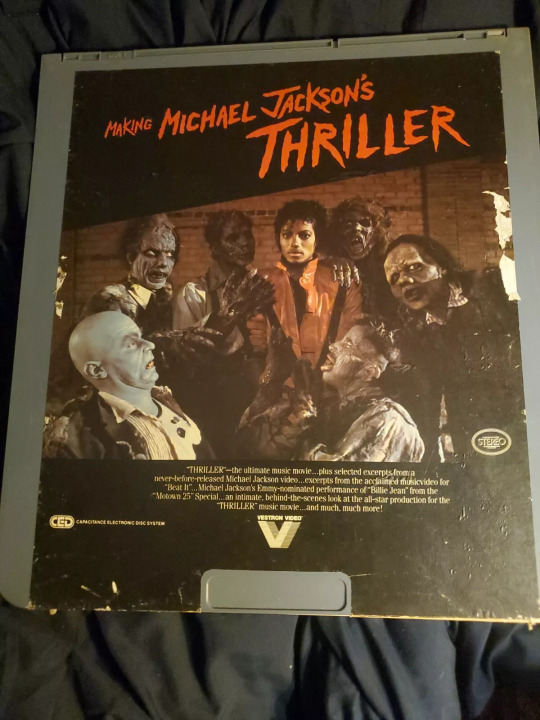
I was almost as curious about the SelectaVision.
They looked like giant flat 8-track cassettes to me, and I had no idea how they worked. These weren't laser discs. They were a competing format that had come out earlier. The SelectaVision discs were packaged inside a giant plastic case (like a big 3.5" floppy disk). These Capacitance Electronic Discs (CEDs) were developed by RCA as an updated analog format. They worked very similarly to vinyl records. From Wikipedia:
"First conceived in 1964, the CED system was widely seen as a technological success which was able to increase the density of a long-playing record by two orders of magnitude. Despite this achievement, the CED system fell victim to poor planning, various conflicts with RCA management, and several technical difficulties that slowed development and stalled production of the system for 17 years—until 1981, by which time it had already been made obsolete by laser videodisc (DiscoVision, later called LaserVision and LaserDisc) as well as Betamax and VHS video cassette formats."
Anyway, where was I? Oh yeah, Billie Jean is one of the best songs of all time. Like maybe top five. Certainly top 10. His performance of the song on network TV was like a Gen X Beatles-on-Ed-Sullivan moment. And while we'd all learn more about Michael Jackson than we ever wanted to, all 1983 me knew about 1983 Michael Jackson was that he was the coolest human alive.
Of course, that was right before I learned about Prince.
0 notes
Text
On our radar: Camp Snap camera
On our radar: Camp Snap camera
I was a child of the late 70s/early 80s. I listened to my music via vinyl, cassette and 8-track tapes. I watched films on BetaMax… or at the cinema. TV was only a couple of channels – live as it was shown or, if you could work out how to do it, it could be set to be recorded on to videotape. Phones all had rotary dials… and a lead that was attached to the wall. Mobile meant that the cord was a…

View On WordPress
0 notes
Text
People like this are invaluable for marketing firms and other industry analysts. I can't remember the name of them, but it's a group of people that almost always choose wrong. People who bought BetaMax over VHS, 8-Track over cassettes, HDDVD over Bluray, Zune over iPod, and so on. Consultants and marketers love them because they're an invaluable predictor like the gargoyle who always lies because you offer them two choices and if they pick your product, you ask them WHY and then do the opposite of what they liked.
This is the tech job equivalent of that. And just as valuable. If I had the money, I'd follow this person on LinkedIn just to know what companies to short.

59K notes
·
View notes